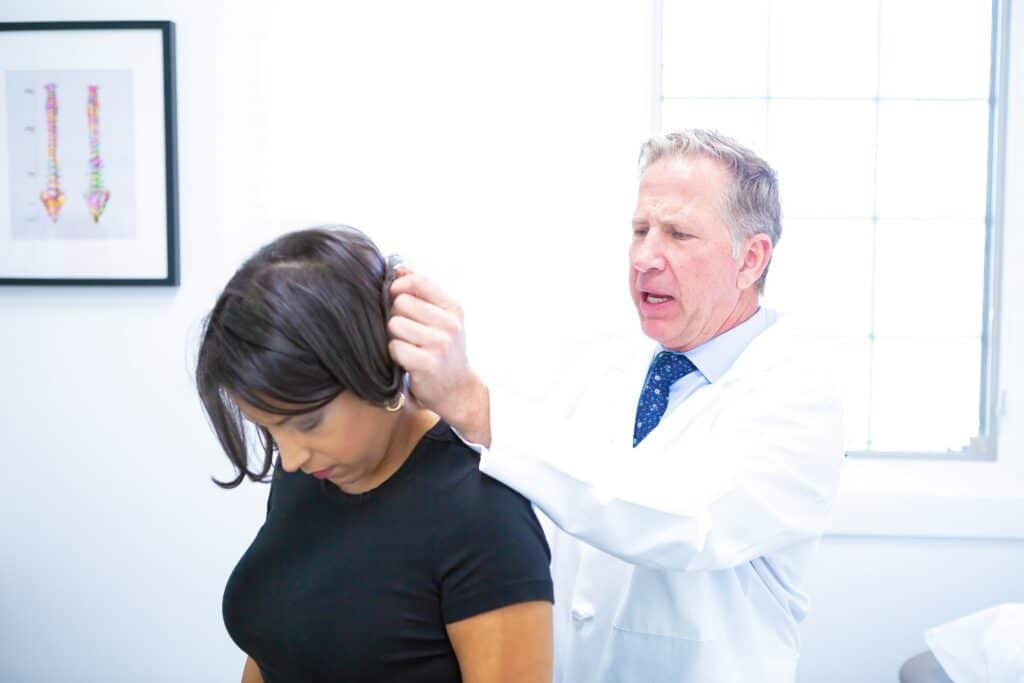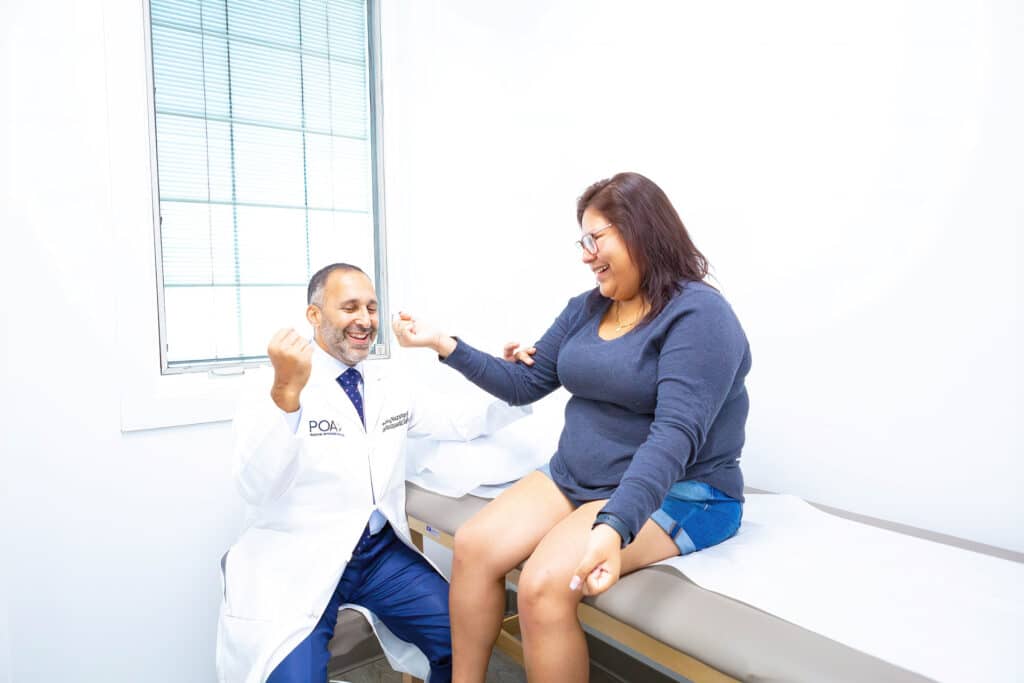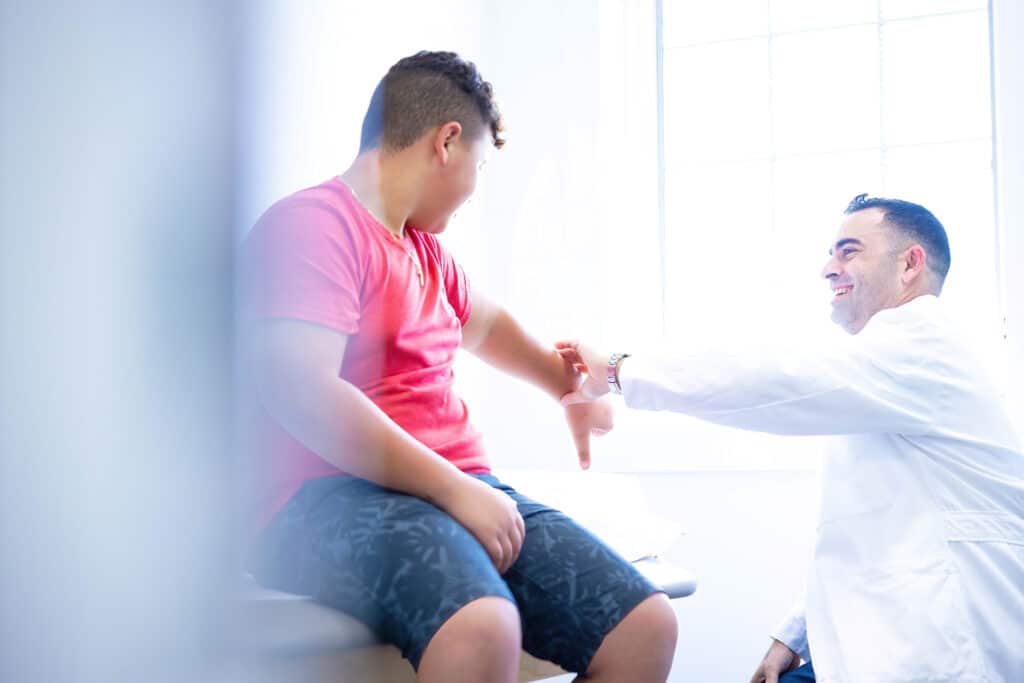
Physician Assistants
Physical & Occupational Therapists
KneeMRI ScansNon-OperativePhysiatry
Physical Therapy
Podiatry
Spine
Sports Medicine
TraumaUrgent Care
X-Ray Imaging

Often referred to as a "pinched nerve," Cervical radiculopathy is an injury to a nerve in the neck that has branched off from the spinal cord. This can cause discomfort that radiates into the shoulder and/or arm, as well as muscular weakness and numbness. Cervical radiculopathy is frequently caused by "wear and tear" changes in the spine that occur with age, such as arthritis. It is most often induced by a traumatic incident leading to a herniated disk in young people. In some situations, no external trauma is connected with the start of symptoms. In most cases, conservative therapy, which includes medication and physical treatment, effectively treats cervical radiculopathy.
Most people with cervical radiculopathy or pinched nerves have degenerative changes in the spine that occur as we age or from a herniated, or bulging, intervertebral disk injury.
The disks in the spine begin to bulge as they age. They also lose water content and become drier. This problem causes the loss of disk space height and the development of disk space collapse. As the disks drop in height, the vertebrae come closer together. The body responds to a collapsed disk by creating more bone—known as bone spurs—around the disk to strengthen it. These bone spurs help to support the spine. Unfortunately, they can also compress the nerve roots, narrow the foramen—the small holes on each side of the spinal column where nerve roots emerge—and pinch the nerve root.
Discs that are degenerating develop arthritis (spondylitis) or spondylosis. These changes are typical and occur in everyone. Almost half of all people between the ages of forty-five and eighty have worn disks and pinched nerves that do not produce unpleasant symptoms. It is unknown why some patients experience symptoms while others do not.
When the jelly-like center (nucleus) of a disk pushes against its outer ring (annulus), it herniates. The nucleus may squeeze all the way through if the disk is severely worn or injured. When the herniated disk swells outward toward the spinal canal, it puts pressure on the sensitive nerve root, resulting in pain and weakness in the area. A herniated disk is most frequently caused by lifting, tugging, bending, or twisting.
The pain caused by a pinched nerve usually begins at the neck and travels down the arm over the area served by the injured nerve. This discomfort is typically described as burning or sharp. Turning one's head may increase the level of suffering. Other signs include:
Some people claim that pain abates when they put their hands on top of their heads. This action may provide temporary relief for pressure on the nerve root.



Your doctor will begin by asking you about your medical history and general health. They will then assess your neck, shoulder, arms, and hands for muscular weakness, loss of sensation, or any changes in your reflexes. To test if your problem is caused by posture, your doctor may request that you perform specific neck and arm exercises to see if they help.
Most patients with cervical radiculopathy get better over time and do not require therapy. The pain in some people goes away rapidly—in days or weeks. For others, intense pain may persist for more extended periods. Cervical radiculopathy that has healed usually does sometimes recur in the future. Even when this happens, it generally improves without requiring further intervention. In some situations, however, a pinched nerve does not improve. These folks must be evaluated and treated.
Nonsurgical treatment is always the first route to treating cervical radiculopathy. Some of those options include:
A soft cervical collar is a padded ring that encircles the neck and is held in place with Velcro. Your doctor may recommend you use a soft cervical collar to allow your neck muscles to relax and restrict neck movement. This can assist decrease nerve root compression by reducing neck motion. A soft collar should only be worn for a short time since prolonged wear can weaken the muscles in the neck.
Some specific exercises can help relieve pain, strengthen muscles in the neck, and increase a patient's range of motion. Traction can also be used in some cases to stretch the joints and muscles of the neck gently.
In some cases, your doctor will recommend medication to help improve your symptoms. These types of medicines are typically NSAIDs or oral corticosteroids. NSAIDs are medications like ibuprofen, naproxen, and aspirin. These can help relieve pain if it's caused by inflammation or nerve irritation. Oral corticosteroids work by reducing swelling and inflammation around the never and may help ease the pain that way.
When steroids are injected near the affected nerve, they can help to reduce local inflammation. While this may not relieve the pressure on the nerve caused by a narrow foramen or a herniated disk, steroid injections may reduce swelling and thereby relieve the pain long enough for the nerve to recover on its own.
Narcotics are only prescribed for patients with severe pain that is not relieved by any of the other options. These are usually considered for a limited time only.
If all other treatment options have failed to relieve your symptoms, your doctor may recommend surgery. There are several procedures to treat cervical radiculopathy. Which one your doctor recommends will depend on many factors, such as which specific symptoms you are experiencing and the location of the involved nerve root.

© 2023 Princeton Orthopaedic Associates. The contents of princetonorthopaedic.com are licensed under a Creative Commons Attribution-NonCommercial 4.0 International License. Copying without permission is strictly forbidden.